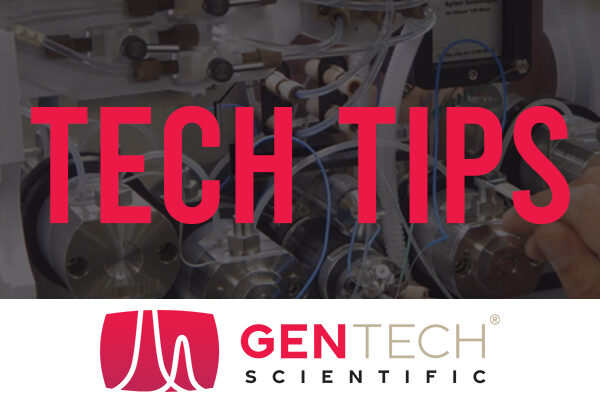Perhaps the most fundamental element of gas chromatography is the carrier gas. In our brief guide, we’ll explain why carrier gases are important in gas chromatography, the most widely used carrier gases today, and the advantages each offer.
The Role of Carrier Gases in Gas Chromatography
Gas chromatography is an analytical technique used in many lab applications to separate and detect chemical components within a sample mixture for identification and quantification. Many labs use gas chromatography for various applications such as quality control in manufacturing, food safety monitoring, research purposes of natural products, and much more.
Carrier gases in gas chromatography are important as they’re the method for transporting the vaporized sample molecules through the column for separation and detection. The carrier gas makes gas chromatography more cost-efficient and faster than liquid chromatography. A carrier gas must be inert to carry the sample throughout the process without reacting with the sample.
The Most Common Carrier Gases
Today, the most common gases used in gas chromatography are nitrogen, helium, and hydrogen. There’s much discussion about the importance of carrier gas selection in gas chromatography, as each offers unique benefits and disadvantages depending on the application and sample.
Nitrogen, for instance, is considered the most efficient carrier gas but is much slower than others, and many don’t consider it practical in temperature-program uses. Hydrogen, on the other hand, provides much faster analysis but brings with it safety concerns that aren’t notable in the other gases. Helium is considered a compromise between the two in terms of efficiency and speed, but limited availability and price is a concern for many labs.
Which Carrier Gas Is Best?
When choosing a carrier gas for a specific gas chromatography application, many factors determine which offers the best value. Consider things like market supply and demand, analytical compatibility with the sample, speed, efficiency, and price.
Helium is used in many lab applications besides gas chromatography, but it is a byproduct of natural gas extraction and is becoming more expensive in many parts of the country and the world. Hydrogen offers many advantages—for example, its quick analysis time and high-efficiency separations—but there’s always the safety risk, as it only requires four percent of gas concentration to cause an explosion. Nitrogen is much more available as it can be generated from air, but its analysis time is much slower.
Conclusion
The carrier gas is essential for gas chromatography, and the choice of the carrier gas can significantly affect the quality of the analytical testing and the rest of the lab. If you’re interested in learning more about gas chromatography or are looking for a gas chromatograph for sale, GenTech Scientific has an extensive inventory of instruments to offer at an affordable price. Contact our staff to learn more or to order your gas chromatograph for your lab today.





